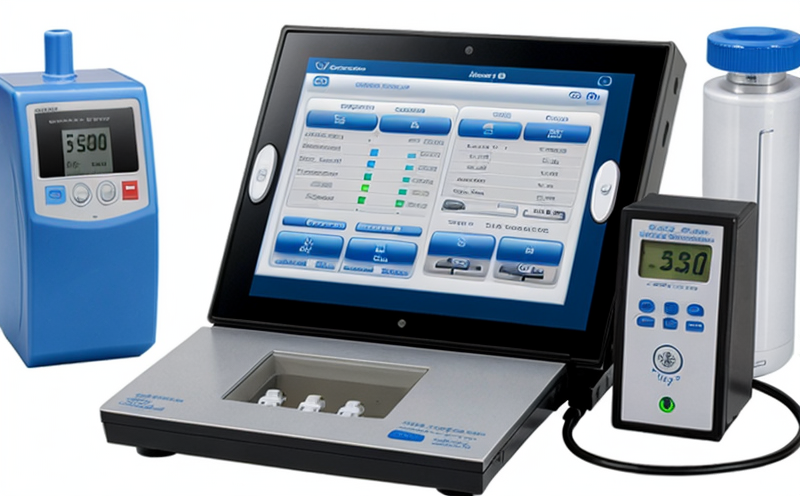Occlusion Alarm Response Testing for Infusion Devices
Infusion devices and drug delivery systems are critical medical technologies that enable precise administration of medications directly into a patient's bloodstream. Occlusions, which are blockages or interruptions in the flow path, can occur during use. These occlusions pose significant risks to patients if not promptly detected and addressed by the infusion device.
The occlusion alarm response testing for infusion devices is designed to ensure that these alarms function correctly under various conditions, thereby safeguarding patient safety. This critical test evaluates how well an infusion pump or drug delivery system responds when it detects an occlusion in its flow path. The primary objective of this testing is to guarantee that the device promptly and accurately triggers an alarm signal, informing healthcare providers of a potential issue.
The ISO 17895:2016 standard provides detailed specifications for evaluating occlusion detection and alarm response within infusion devices. This standard ensures consistent methodologies across various manufacturers and models, promoting reliability and safety in medical technology. Compliance with such standards is essential to meet regulatory requirements set by the U.S. Food and Drug Administration (FDA), European Union (EU) Medical Device Regulation (MDR), and other global health authorities.
The testing process involves simulating different occlusion scenarios using standardized test specimens, which are designed to mimic real-world conditions as closely as possible. The infusion device is connected to this occlusion model, and the system is subjected to various pressures and flow rates. By doing so, we can assess how accurately the device responds to a variety of occlusions.
Understanding the parameters involved in these tests helps explain why they are crucial for quality assurance. Key variables include:
- Type of Occlusion: Different types of occlusions (e.g., partial, complete) and materials (e.g., blood clots, air bubbles).
- Pressure Variations: Simulating different pressures that could be encountered during use.
- Patient Condition Mimicry: Representing the physiological conditions of a patient receiving treatment accurately.
- Flow Rate Control: Adjustments to ensure the test reflects real-world usage scenarios.
The testing process also involves monitoring the device's response time and accuracy. The ideal scenario is for the alarm to sound within seconds of detecting an occlusion, with minimal false positives or negatives. False alarms can lead to unnecessary interventions, while missed alarms could result in patient harm due to prolonged exposure to potentially harmful conditions.
At Eurolab, we use state-of-the-art equipment and follow rigorous protocols to ensure the accuracy and reliability of our testing results. Our laboratories are equipped with advanced occlusion simulation devices that can replicate a wide range of real-world scenarios. These devices allow us to test the infusion device under controlled conditions, ensuring consistent and repeatable results.
This level of precision is vital for manufacturers seeking to meet regulatory standards and ensure product safety. By conducting these tests, we help manufacturers identify potential design flaws or operational issues early in the development process, allowing them to make necessary improvements before the devices reach the market.
Why It Matters
The importance of occlusion alarm response testing cannot be overstated in the medical device industry, particularly for infusion devices. These devices play a pivotal role in delivering life-saving treatments with precision and safety. Occlusions can lead to serious complications if not promptly identified and addressed by the device's alarm system.
Healthcare providers rely on these alarms to quickly respond to potential issues, ensuring that patients receive appropriate care without delay. The accuracy of occlusion detection directly impacts patient outcomes, making this testing a crucial aspect of quality assurance in medical technology.
From the perspective of regulatory compliance, adherence to standards like ISO 17895:2016 is mandatory for manufacturers. Non-compliance can result in product recalls and legal ramifications. By conducting thorough occlusion alarm response testing, we help ensure that your devices meet these stringent requirements while enhancing patient safety.
Benefits
- Prompt Detection of Occlusions: Ensures the device responds accurately to blockages, minimizing risk to patients.
- Avoidance of False Alarms: Reduces unnecessary interventions and ensures reliable performance under all conditions.
- Compliance with Standards: Helps manufacturers meet regulatory requirements in various regions worldwide.
- Improved Device Safety: Identifies design flaws or operational issues early, allowing for timely corrections.
- Patient Confidence and Satisfaction: Reliable devices lead to higher patient trust and better treatment outcomes.
- Enhanced Reputation: Demonstrating commitment to quality control can strengthen your brand's reputation in the medical device industry.
Eurolab Advantages
At Eurolab, we pride ourselves on delivering unparalleled service and expertise in occlusion alarm response testing for infusion devices. Our laboratories are equipped with cutting-edge technology and a team of highly skilled professionals dedicated to ensuring the highest standards of quality.
We understand the critical nature of this testing and provide detailed reports that not only document test results but also offer actionable insights for improving your device's performance. With Eurolab, you can be confident in the reliability and safety of your infusion devices, knowing they have undergone rigorous testing to meet stringent standards.





